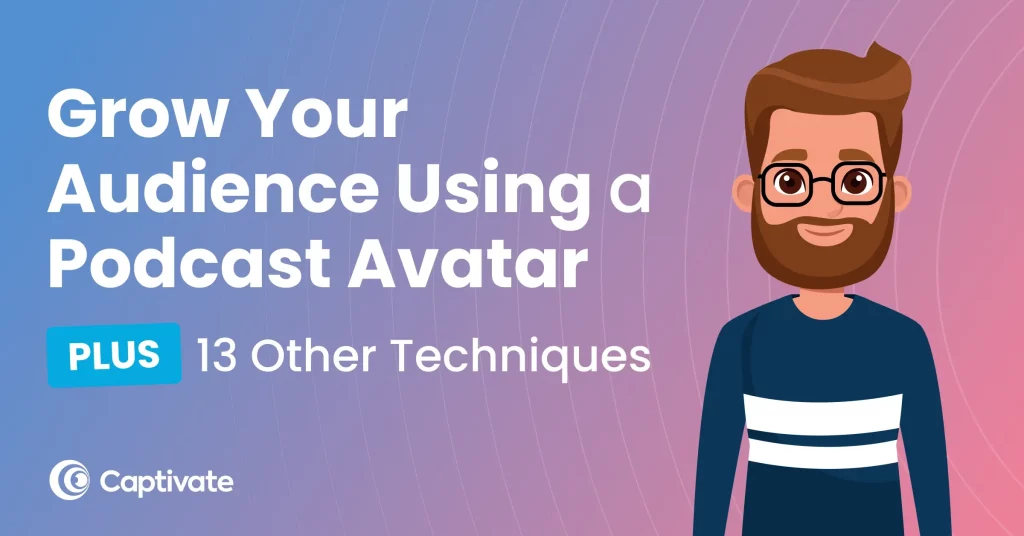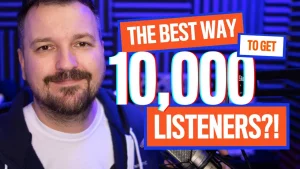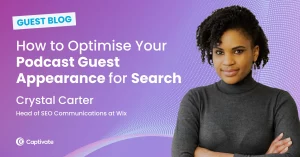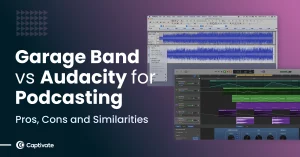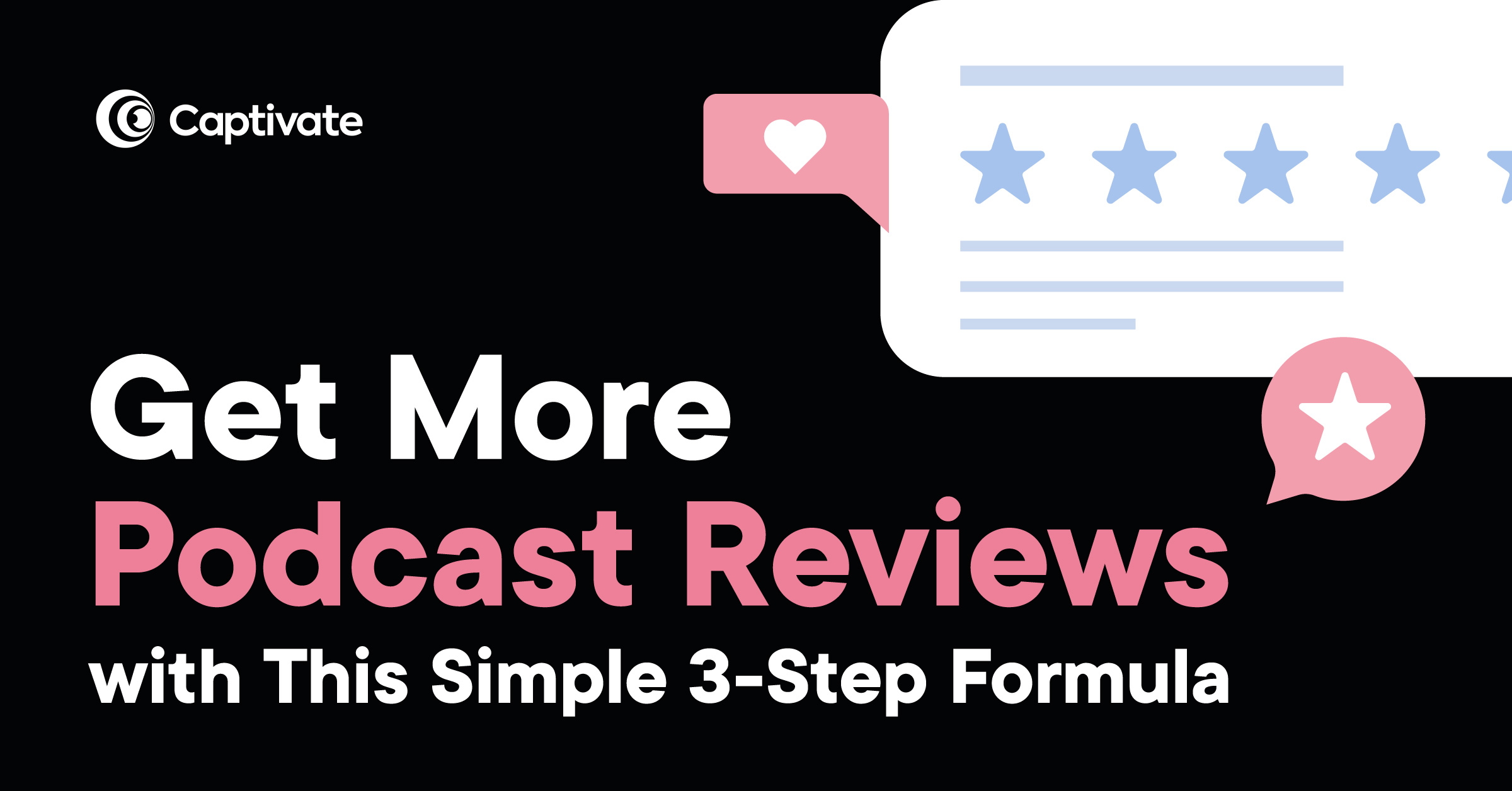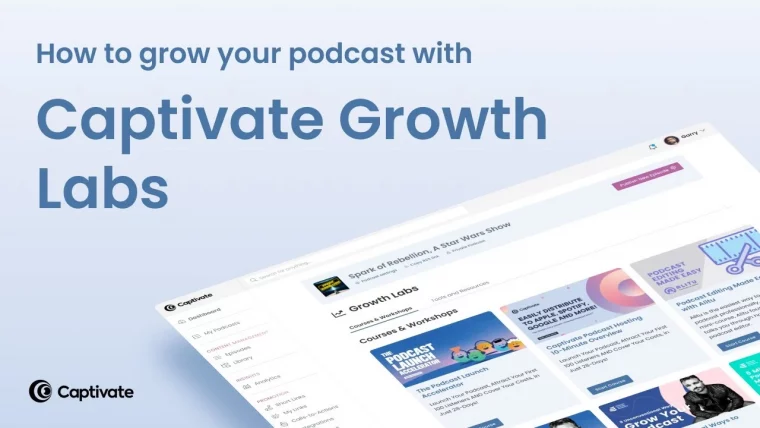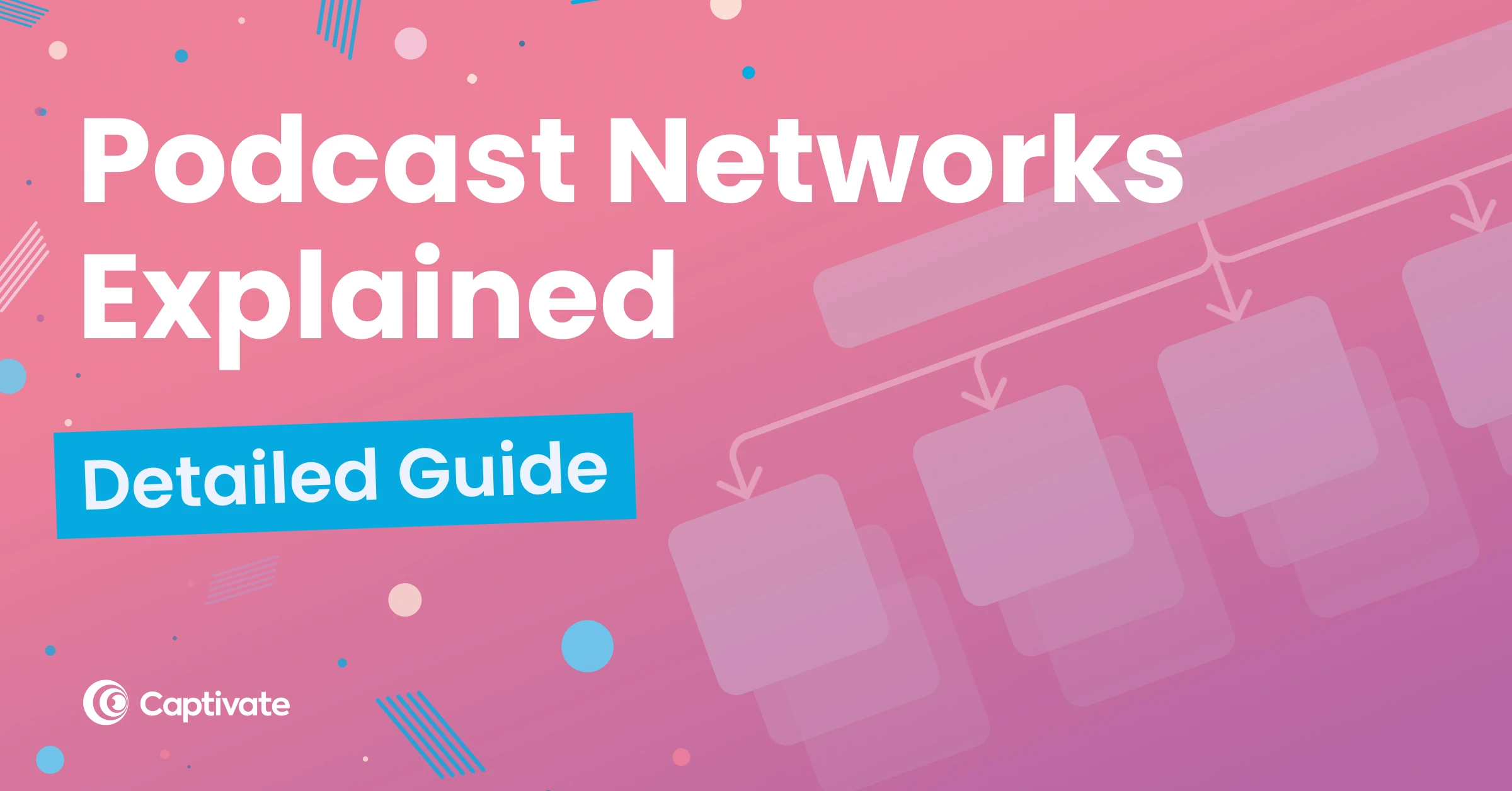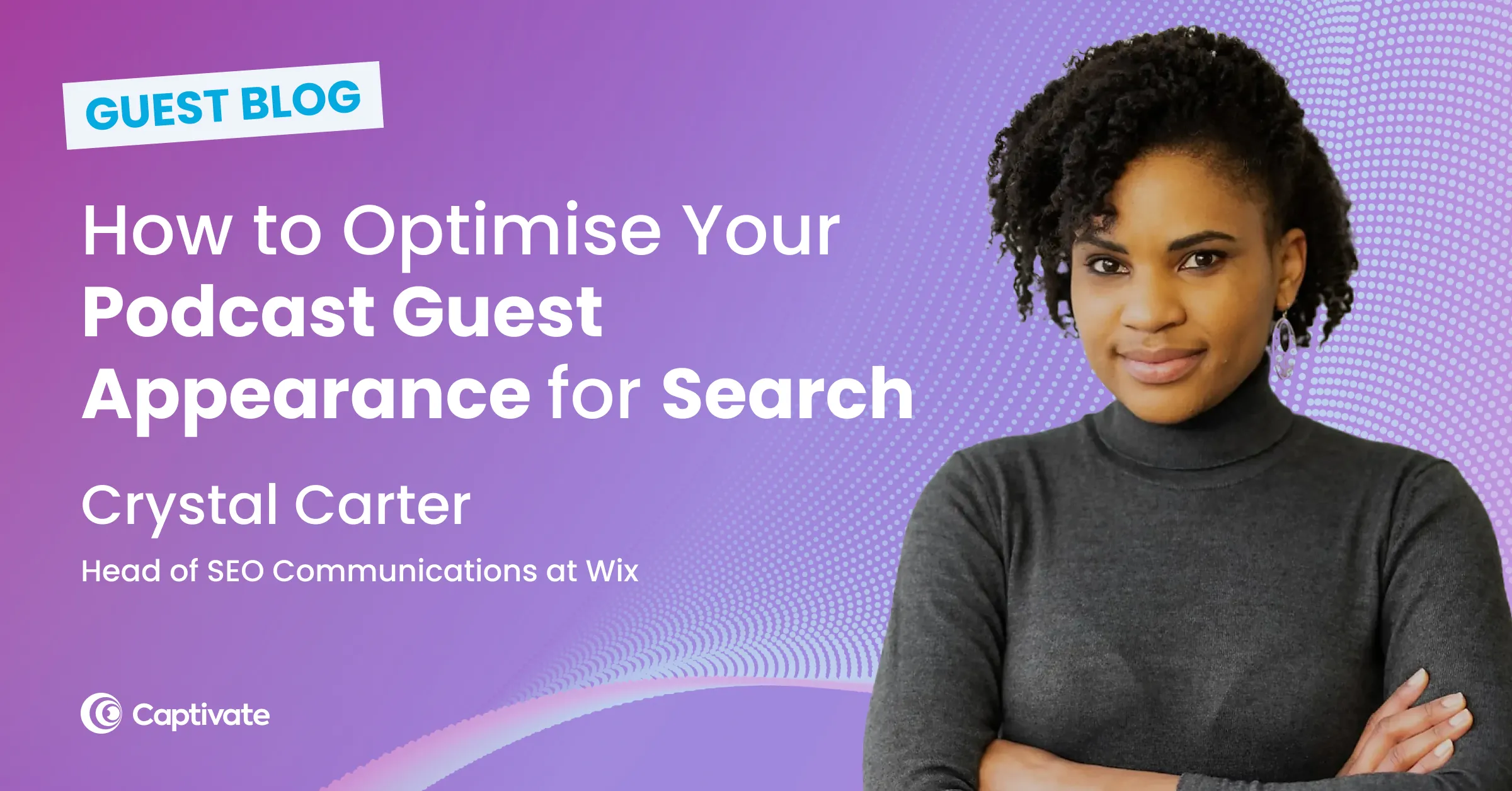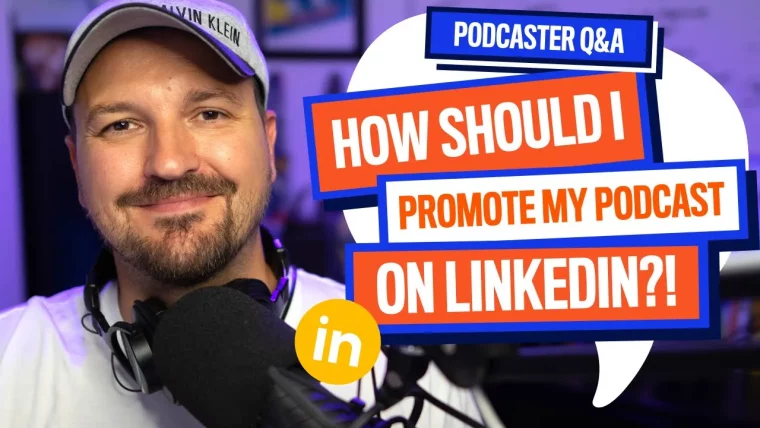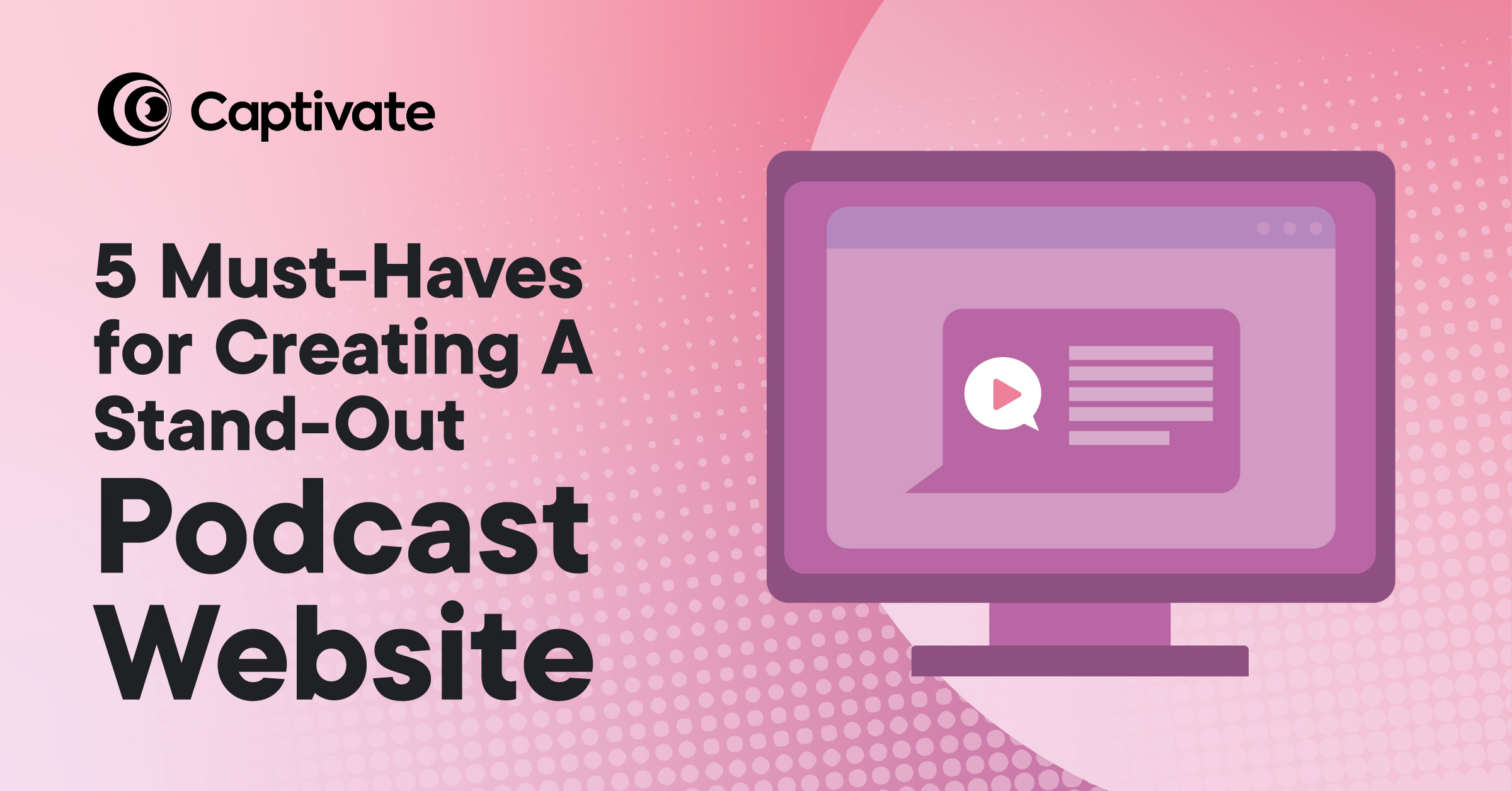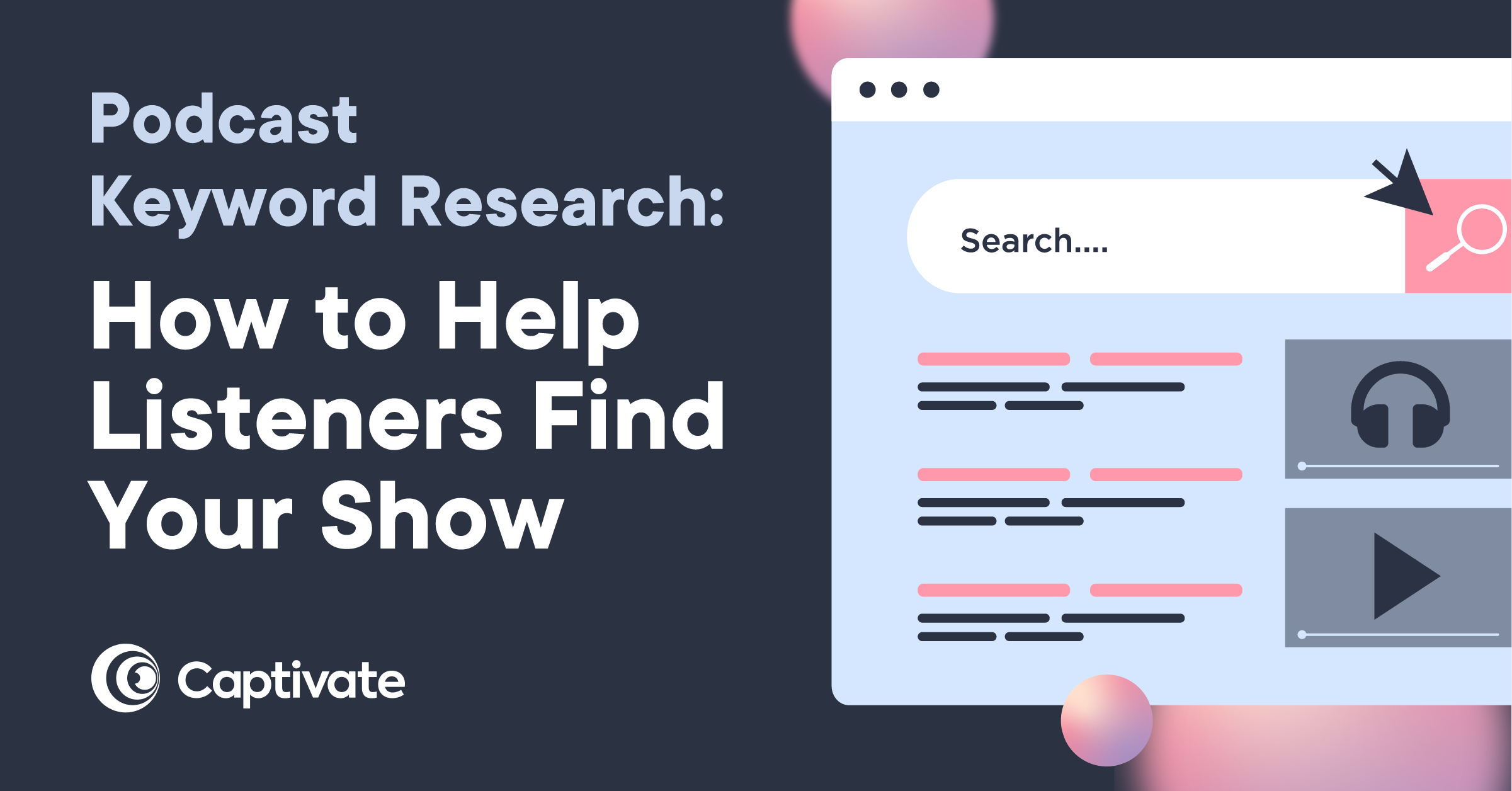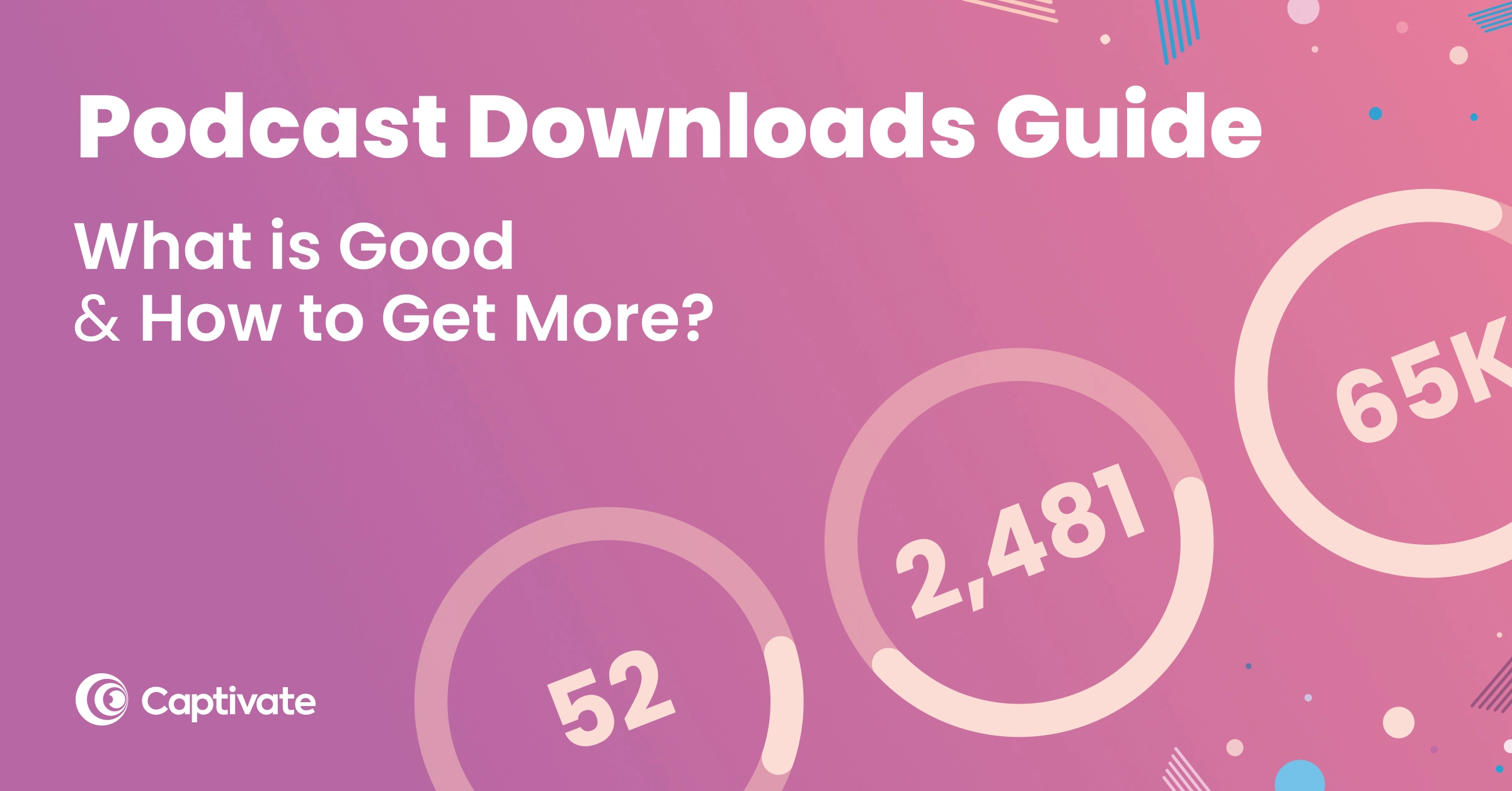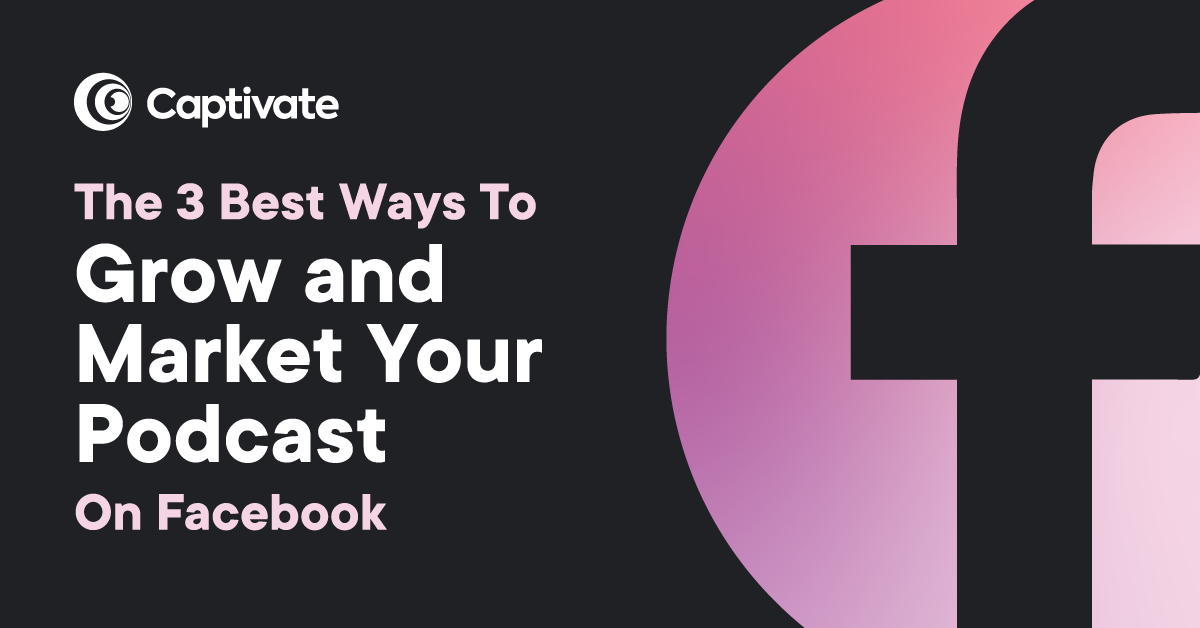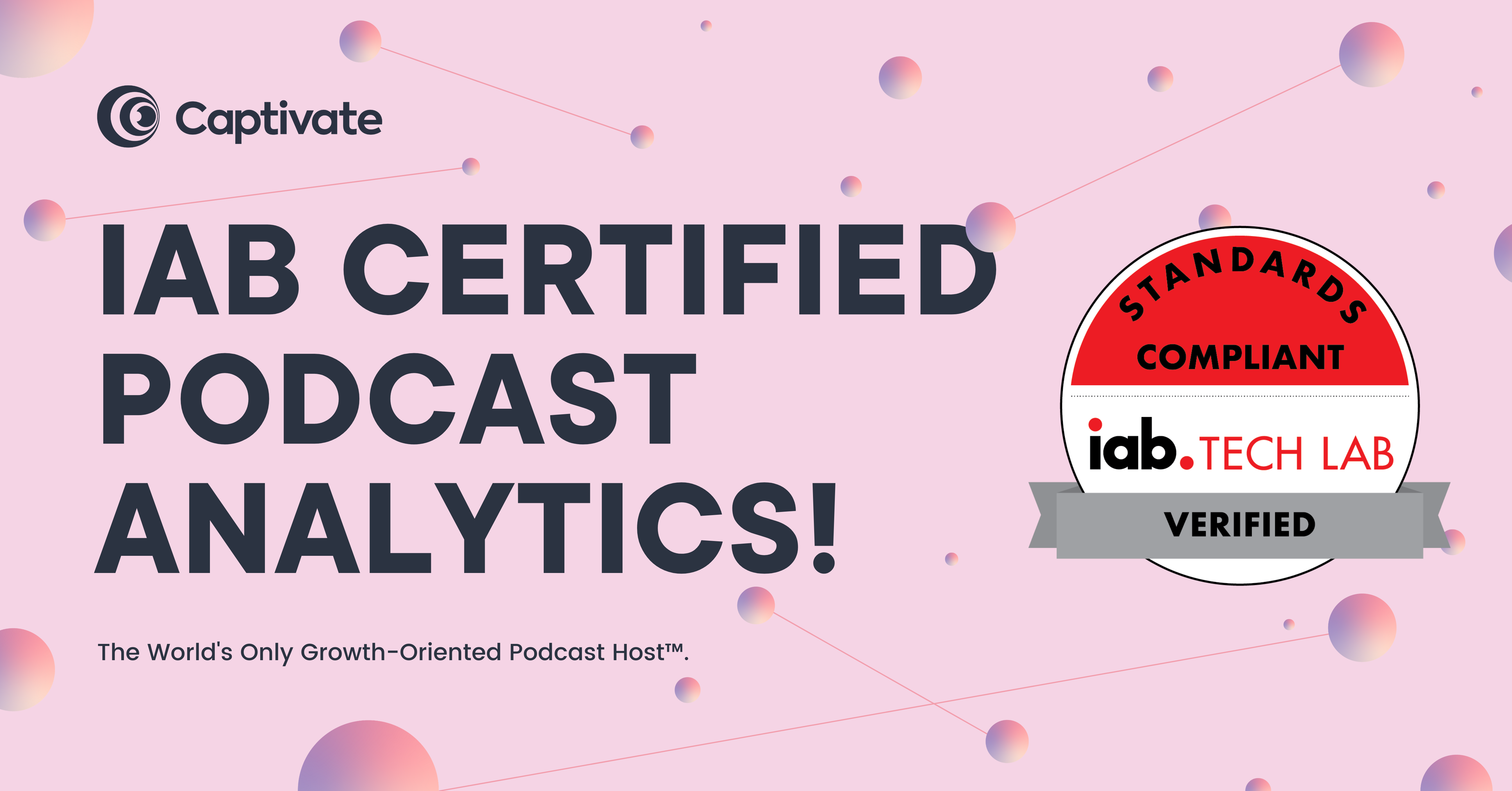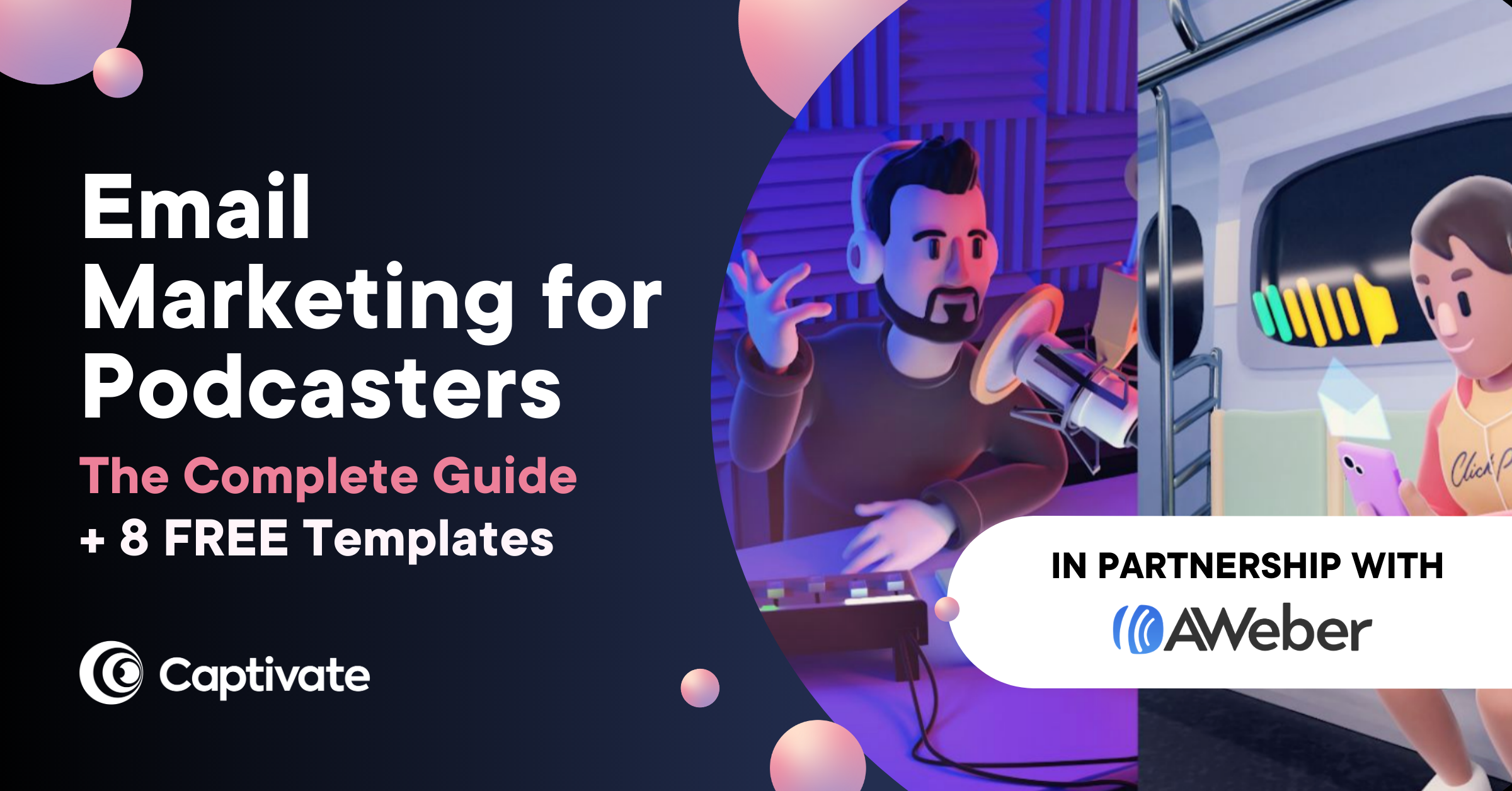There are many ways to grow and improve your podcast, all of which we will explore – but we think a good place to start is with knowing your audience using a listener avatar. That way, you can build everything from the ground up with their needs in mind.
In this article, we’ll teach you:
- What a podcast listener avatar is
- How to create one
- Why this will help you to grow your audience
- Other growth methods to use alongside your avatar
In this article...
Why is defining a podcast audience important?
Making a podcast that will appeal to everyone is the same as making a podcast that will appeal to no one. If you don’t know exactly who you’re making your show for, you can’t design it in a way that will attract that desired audience.
But how do you know who you’re making it for? Interaction with your audience is generally limited to reviews and feedback after you’ve released your show, when in fact you really need to know who your audience is before you even start recording.
If you’re struggling with knowing who to reach and how to reach them, creating a listener avatar will help you!
How To Find Your AudienceA Complete Guide
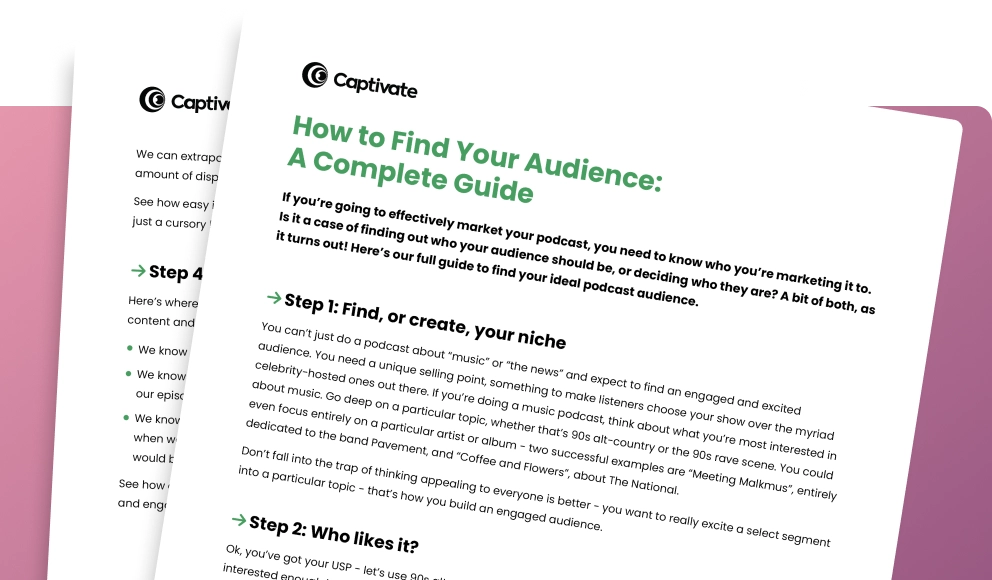
Download How To Find Your Audience Guide right now,
for free!
"*" indicates required fields
100% secure. We never share your email
What is a listener avatar?
Your listener avatar is your ideal listener: the exact person you’re trying to reach with your podcast. You need to know them inside and out.
To be clear – you’re picturing one person, not a group. Give them a name! For this exercise, I’m going to name my avatar Jason. Let’s think about Jason, and how we can make him the perfect avatar for my show about 90s rock music.
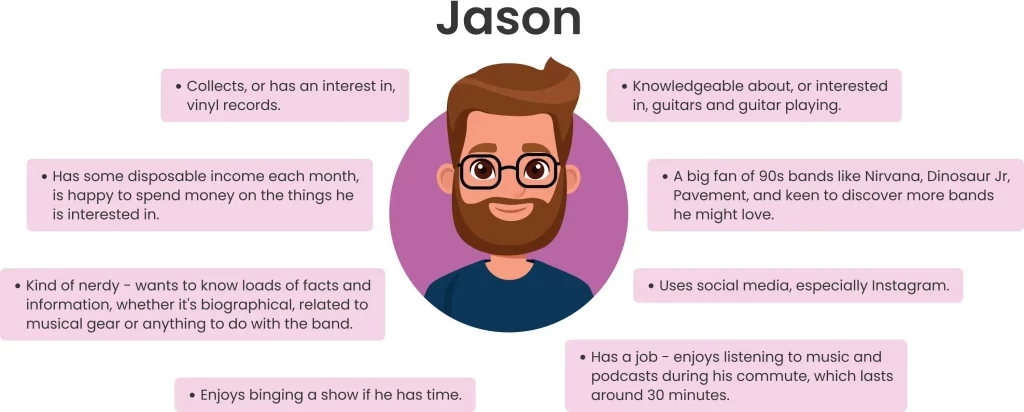
Can you picture him? Each of these facts lets us make our podcast, or our podcast marketing, a little bit more niche, and therefore a little bit more interesting to our target audience. We’re not trying to appeal to everyone – a podcast about music in general would just get lost in the ~5 million podcasts out there. To stand out, we want to be niche and specific.
Using your listener avatar to shape your podcast
Ok, so now we’ve got a good, solid idea of who we’re trying to reach with the show, how can we use this information?
When we know who we’re targeting, we can shape every aspect of the show around them. Let’s see:
- Episode Length: Around 25-30 minutes. Nice and bite-sized, perfect for Jason’s commute.
- Episode release schedule: Weekly. Committing to a daily show is a bit much for us, as we’re only a hobbyist. A weekly release means Jason can anticipate the episode, and it can become part of his routine: “I listen to this show on my commute to work every Tuesday”, for example.
- Podcast content: Deep dives on a band, singer, piece of gear, venue or album linked to 90s alt rock. An absolute plethora of content that will appeal to Jason – we know he’s into guitars, so let’s talk about how J Mascis got that specific sound while making a record, or about how something that happened in Elliott Smith’s childhood inspired his lyrics. If you’re passionate and knowledgeable about it, that will translate through to Jason.
- Podcast Call To Action: A Call To Action (CTA) is just something that you ask your listener to do. It should be proportionate to their relationship with you: if you’re just starting out, don’t ask people to give you money or buy merch – you need to work up to that. A proportionate CTA here is to ask Jason to follow us on Instagram – we know that Jason uses it (and we’ve not pulled that out of thin air, it makes sense given his age), so that’s where we should interact with him. Sharing on Instagram when our episodes release will allow Jason to build them into his routine, as discussed above.
- Engagement with listeners: Ok, so Jason follows us on Instagram. We don’t just want to share when a new episode is live, that’s just asking him for things constantly. In order to actually create a relationship, we want meaningful engagement which doesn’t feel transactional: post behind the scenes content, polls, video snippets, on stories and the grid, you can also repost interesting content from other accounts that Jason would enjoy. You need to also interact in your DMs and reply to comments. You shouldn’t be actively promoting or selling all the time, you’re just positioning yourself as friendly and knowledgeable. It pays in the long run!
- Merch and monetization: While not every podcaster is aiming to monetize their show, that is the goal for many of us. If we know what our listener is interested in, we can tailor our merch and monetization options around that. How about bonus, premium episodes doing a super deep dive on the recording of a given song? Or a raffle giveaway to win a vinyl record? Podcast apparel that looks like vintage band tees? The sky’s the limit!
Using an audience avatar to get and build a podcast audience
As you can see, referring back to your avatar allows you to get really granular on every aspect of your show, optimising each key step in order to maximise connection with your audience.
As your show grows, you should be sure to keep an eye on who engages with you on social media, who leaves reviews, etc. – this is the best indicator of those who are your actual fans. Try to look into if this matches up to the avatar you were aiming for. If it’s different to what you expected, maybe try tweaking aspects of your plan to tailor your show towards the actual audience, and see if this increases engagement. It’s fine to go back if it doesn’t – this is called split testing, and it’s a great way to see what works with your audience.
Your Listener Avatar
Okay, now you’ve seen how it’s done: it’s time to put this into practice! Using the template below, write down six things about your listener avatar. Then, use those statements to plan out how you’ll run your show.
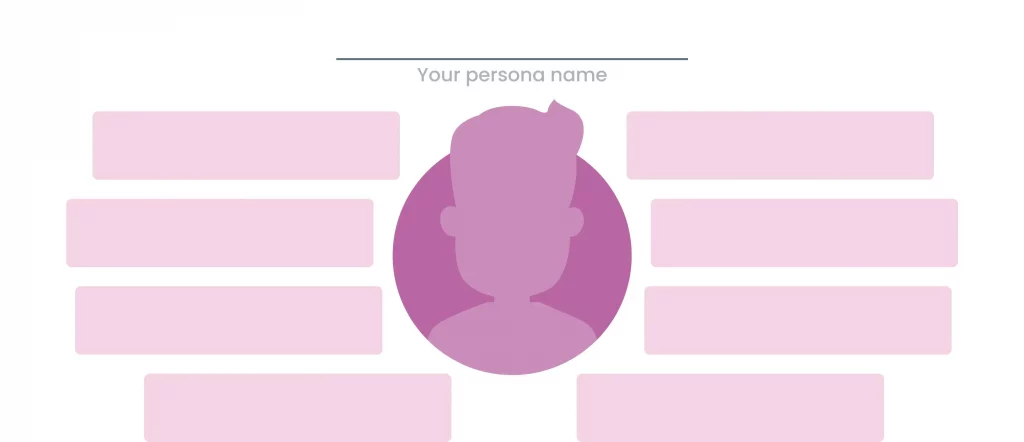
Shaping your own show with your listener avatar
Once you’ve filled out your own avatar’s characteristics, use them to shape your own show, like I did above.
Episode length:
Episode release schedule:
What kind of content will your show have?
Podcast Call To Action (CTA):
How will you engage with your listeners?
Another article we think you'd like...
Reading Time: < 1 minute Podcast Movement member John Herzog asked, “What is the best way to get 10,000 podcast listeners?” The answer might surprise you…
Merch and monetization ideas:
- 1)
- 2)
- 3)
- 4)
- 5)
- 6)
13 other ways to grow a podcast audience
Great work creating your avatar! Now let’s look at some other methods to grow your podcast.
1. Ask for reviews
Asking your listeners for a Podchaser review is a nice, easy CTA that will improve your brand positioning. The more positive reviews you have, the more credibility your show will have – you’ll be seen as an authority on your chosen topic.
When asking listeners for a review, make it as simple for them to do as possible: include a link to Podchaser in your show notes and spell out the steps they need to take. The less you leave up to them, the more likely they are to do it. To further increase participation, you could even offer a reward, like some bonus content!
2. Be a guest on someone else’s show
Reach out to other creators in the same niche as you and ask to feature on their show. This positions you as an expert coming in to give your voice, and exposes you to the whole of their audience.
When doing this, make sure to research and prepare – being an engaged and present interviewee or co host is a skill in and of itself. This is your first impression with their audience, so be friendly, knowledgeable and polite. And be prepared to reciprocate for other creators in your community!
Think quality over quantity. Your aim shouldn’t be to appear on as many other podcasts as possible, you’ll just end up spreading yourself too thin. Focus on reaching out to other podcasts which will appeal to your podcast avatar – that’s where they’ll hear you.
3. Don’t overdo it with CTAs
When you’re asking your listeners to do something for you, make sure it is just one easy thing. If, after an episode full of quality content, you’re asking listeners to follow you on Twitter, or leave a review, they’ll be pretty likely to do it. If you’re asking for three or four separate things, some of which might be more than just clicking a button, the chances are your listeners aren’t going to do any of them.
4. Engage with your followers
Nice, you managed to build a following on your app of choice! Now it’s time to put some work in: talk to your followers, reply to their comments and post things just to start a conversation. Not everything should be a transaction – building an actual relationship with your listeners and posting quality content on your socials is amazing for brand positioning and growth.
5. Use fewer social media platforms
Ok, this one might sound counterintuitive, but you know where your listeners will be most active based on your listener avatar. Sure, it makes sense to have an account everywhere, but in terms of daily interaction, just focus your energy on wherever your listeners (or target audience) hang out.
It’s incredibly hard to engage meaningfully on three or four different apps daily, and it’s likely not going to increase your growth much compared to doing it well on a single app. Find out where your listeners are and focus your energy there.
6. Choose the right time to monetize
In the podcasting world, if someone is going to spend their hard-earned cash on whatever you’re selling, you need to really earn their trust. If you’ve only released two episodes, it probably isn’t the best time to start a private feed and offer paid exclusive content.
Do some research – if you get a good response to an easy CTA, like asking for a review, maybe your listeners will be more receptive to paying for something, whether it’s merch or exclusive content. If you don’t get a lot of interaction with that basic CTA, hold off on the paid content and focus on growing your main show.
7. Do content swaps
Find other podcasts that have a similar audience to you, and ask if they would be open to do a content swap with you.
This is where they will insert an episode of your show into their feed, meaning you’re exposed to all their regular audience, and vice versa when you include an episode of theirs on your podcast. So it’s a win, win situation. You are both opening up your audience to each other. When reciprocating, make sure you make this crystal clear to your listeners – you don’t want to catch them off guard with a random episode of a different show. For example, in your introduction, you could say something like:
Hey, welcome to another episode of the [insert name] podcast! This week we’re shaking things up! I was listening to an episode of [insert name] podcast, and thought the content was gold and very relevant to this podcast, and of course, you my listeners. So get comfy and listen to [host name(s) and guest(s)] talk about [topic].
Make sure you also ask them to include how they can find and connect with your podcast during that episode, and that the show notes have links to your podcast. Again you can reciprocate and do the same for them.
How To Find Your AudienceA Complete Guide

Download How To Find Your Audience Guide right now,
for free!
"*" indicates required fields
100% secure. We never share your email
8. Make sure you have an XYZ statement
Listeners are bombarded with a million reasons to listen to podcasts every day – don’t add to the noise, just give them one simple reason to listen to your show using an XYZ statement.
This gives them a tangible way in which the show will benefit them: my show does X for Y to make Z happen. Here’s an example using our example show from earlier:
“My show goes deep on iconic albums and artists for alt rock fans to pull back the curtain on your favourite music.”
Simple, effective, and explanatory.
You can use the XYZ statement in every place that your promote your podcast, whether that’s on your trailer, in paid for adverts, internal CTAs etc.
9. Let them know subscribing is free
A lot of listeners associate subscribing, whether that’s on YouTube or Spotify, with having to pay a monthly fee. This, understandably, can put them off.
When asking listeners to subscribe, remove this obstacle for some of your potential listeners by always saying “subscribe for free”.
Another article we think you'd like...
Reading Time: 5 minutes Crystal Carter from Wix, shares how you can start optimizing your podcast guest appearances for search engines such as Google to boost visibility!
10. Repurpose your podcast
Repurposing your great content can help with podcast discoverability and getting more eyes on it – you could use the transcription of the podcast to create a blog post, pull out key takeaways for social media posts eg Twitter threads, record video when recording episodes and upload it to YouTube etc. The repurposing possibilities are endless.
Always try and include a CTA at the end to check out your podcast trailer – these methods should all be there to drive your show’s growth.
11. Make a trailer
With podcasting, it’s always important to remember proportionality. If someone has never heard of your show, listening to a 40-minute episode is a pretty big ask, even a shorter 15-minute episode. If you make a short, minute-and-a-half-trailer, you can explain to them what your show is and why they should commit their time. Think about it, how many times have you watched a trailer for a movie, before going to watch the full feature. Trailers work and is a great place to try out your XYZ statement! You can publish a trailer with Captivate and if you have website enabled, you can also pin it to the top of your website. Here’s our advice on how to create a trailer.
12. Have a website and do transcripts for your podcast
Potential listeners can come across your podcast and episodes when searching for relevant queries in Google eg ‘best digital marketing podcasts’ or ‘how to do TikTok for business podcast’. If you’re on mobile, Google will show a carousel with podcast episodes (that you can click and play in Google Podcasts). However, if you have a website for your podcast and pages for episodes, Google can also show this in its search results.
So if you don’t have a website, this needs to be on the top of your to-do list (with Captivate you can automatically generate a website for your podcast, all you need to do is some styling in the dashboard), and make sure your individual episodes also have pages. When setting up your podcast website, we recommend checking out our podcast SEO article.
Transcripts are a must for accessibility, opening up your show to those who may ordinarily have trouble accessing audio content. However, they can also help people discover your podcast in Google and other search engines, if you have a website (see above point). Remember that Google predominately deals with webpages, and is not automatically transcribing audio (there are debates about this, so perhaps in the future…), so when Google is crawling website pages, by having a transcript you are giving them the text version of your audio, so it can better understand what that page and your episode is about. This means Google is more likely to show you in search results when potential podcast listeners search for a relevant query.
13. Get mentioned on other blogs and articles
Go to Google and type in ‘best [insert topic] podcasts’, so for example let’s say you have a podcast about training dogs, you’d type in ‘best dog training podcasts’. Once you’ve typed your query into the search bar, hit search, and what you’ll see is listicles. Listicles are articles or blogs that review ‘X of the best’ products or services, so in this case, it would be dog training podcasts. Example below:
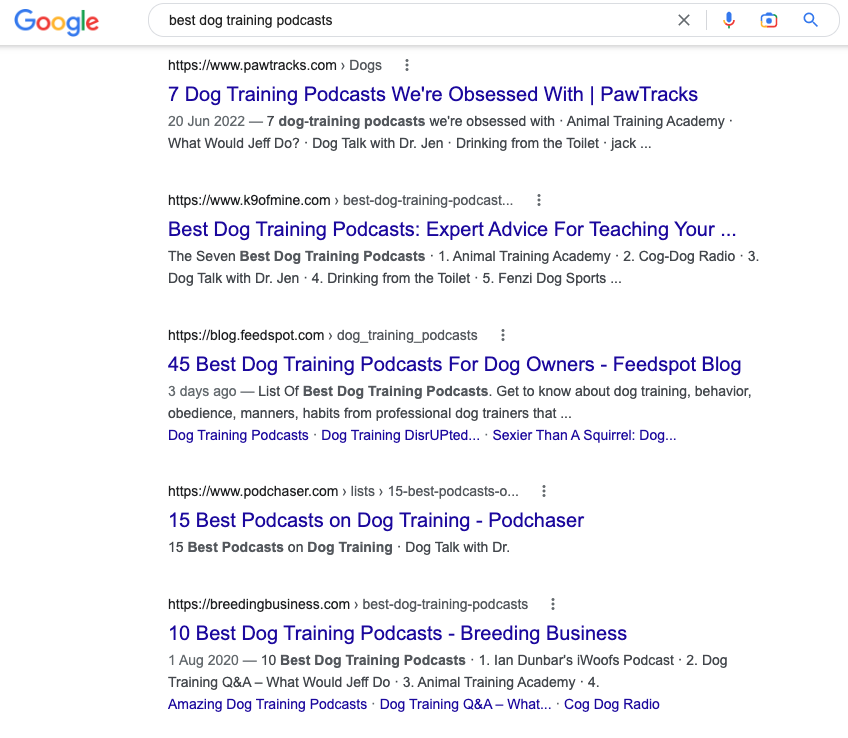
If you have a dog training podcast, you need to appear on these listicles with a link to your podcast. If you aren’t listed, find the author of the article and reach out to them with your XYZ statement, trailer, and listener reviews, and ask them to feature your podcast. You may even catch the author at a good time eg they are about to update their article, and now they know about you and your awesome podcast.
FAQs about podcast audience and growth
Below we have answered frequently asked questions from podcasters about podcast audiences and growth.
How do you know if your podcast audience is decent?
We get asked this question quite a lot, and it’s easy to see why: podcasters are keen to know if their hard work is being well received.
Nevertheless, it’s a hard one to answer! It depends how you measure success and your reason for podcasting. There isn’t a magic number that we can point to and say: “okay, you’ve had this many listens, you’re a success”.
Maybe a better way to look at it is: are your listeners engaged with what you’re doing? If you’ve got a niche podcast, maybe success for you looks like a small number of listeners who listen to every episode, interact with you on social media and talk about your show with other fans of your topic. If that isn’t success, what is?
How do you set realistic podcast growth targets?
We’re not all going to be Joe Rogan, pumping out daily episodes to millions of listeners. A realistic growth target is subjective and personal – if you had 500 unique listeners, try some social media campaigns to push that to 600 this year.
You’re not in competition with other podcasters’ listener numbers, your only goal should be to produce better and better content and improve on your own figures. When setting a target, look back at your historic data and see how your growth trends. If you usually increase by 1000 downloads a year, set the goal this year for 1500.
What metrics should I be using to measure audience growth?
At Captivate, we track two main numbers in our analytics section: downloads and unique listeners. A download is an episode being either downloaded or listened to for more than a minute. A unique listener is an individual who accesses your content. So if two different people listened to five episodes each, you would have ten downloads and two unique listeners.
We’re fully IAB certified, meaning you can trust our analytics are reliable and truly representative of your listenership.
As well as these figures, it would be good to keep track of positive Podchaser reviews – these indicate an engaged and interested audience. If someone has taken time out of their day to leave you a nice review, that person is really happy with your content.
Another metric to look at is social media followers – wherever your target demographic hangs out, if you can boost your followers and presence there then you stand a good chance of reaching them. As the size of your account grows, you’ll be perceived as an authority figure!
What do I do if my podcast audience growth starts to plateau?
This one is simple – try something new!
Join a community of podcasters to get ideas or just ask for advice, such as our incredibly active Growth Labs Facebook Group. You could also ask for feedback from current fans.
If you don’t run giveaways, try one. Try asking for episode topic ideas from your audience, and then when you cover a given topic give a shout out to the person who suggested it. Try a new format! Bring a guest on or collaborate with other podcasters in your niche – that exposes you to a whole new audience.
If you’re plateauing, don’t despair – it’s just a chance to try some new and exciting ideas for your show.
How long does it take to build a podcast audience?
It takes as long as it takes! There isn’t one answer, as it will be completely different for every podcaster.
Unless you’re a celebrity with name recognition, starting your first podcast can feel like an uphill battle. Your biggest asset in the earliest stages will be friends and family who listen to your show, share it and leave reviews. As these start to mount up, you’ll start to see listeners and fans trickle in of their own volition.
What is the average podcast audience size?
Strictly speaking, this is a hard question to answer. There is no average podcast audience size, as there’s no average podcast: it’s all relative to your show and niche! Don’t get to caught up with this one.
Another article we think you'd like...
Reading Time: < 1 minute Podcast Movement member John Herzog asked, “What is the best way to get 10,000 podcast listeners?” The answer might surprise you…
Sure, audience size could be one way you measure success – but not the only way. Sponsors would much rather have an advert go out to a smaller, more engaged audience than a greater number of listeners who put less stock in what the podcaster is saying.
What we recommend doing is looking at your own audience analytics, and seeing if your downloads are increasing over the months. If there is an upwards trend, you know that what you are doing is working, however, if there is a decline or it starts to plateaux, that’s when you need to some investigating or trying something new.
Luckily there’s a whole list to try above!
Who has the largest podcast audience?
At time of writing, the biggest podcast in the world is The Joe Rogan Experience, with 11 million+ listeners per episode. This is followed by Crime Junkie, with just under 6 million listeners per episode and then Call Her Daddy with around 3 million tuning in for each episode. Source
We have included this FAQ as podcasters do ask it, but these podcasts have exceptionally large audiences and number of listeners. Don’t be put off or think that you should be competing, as that’s not realistic. Take over advice from an earlier FAQ when we answered what is a decent podcast audience (spoiler, it depends!)
Takeaway and TL;DR
Creating a podcast listener avatar lets you dig deep into who will be listening to your podcast, which allows you to shape every aspect of it to appeal to them – from your episode length to what merch you sell.
There are so many ways to stop podcast stagnation, from being a guest on other shows to content swaps to something as simple as just creating a trailer. Give these ideas a try and see how they help!
If you haven’t already, go and create your own avatar using the activity above. Even if you just change one thing about your show to better appeal to your avatar, that’s a step towards growth and listener retention.
How To Find Your AudienceA Complete Guide

Download How To Find Your Audience Guide right now,
for free!
"*" indicates required fields
100% secure. We never share your email

